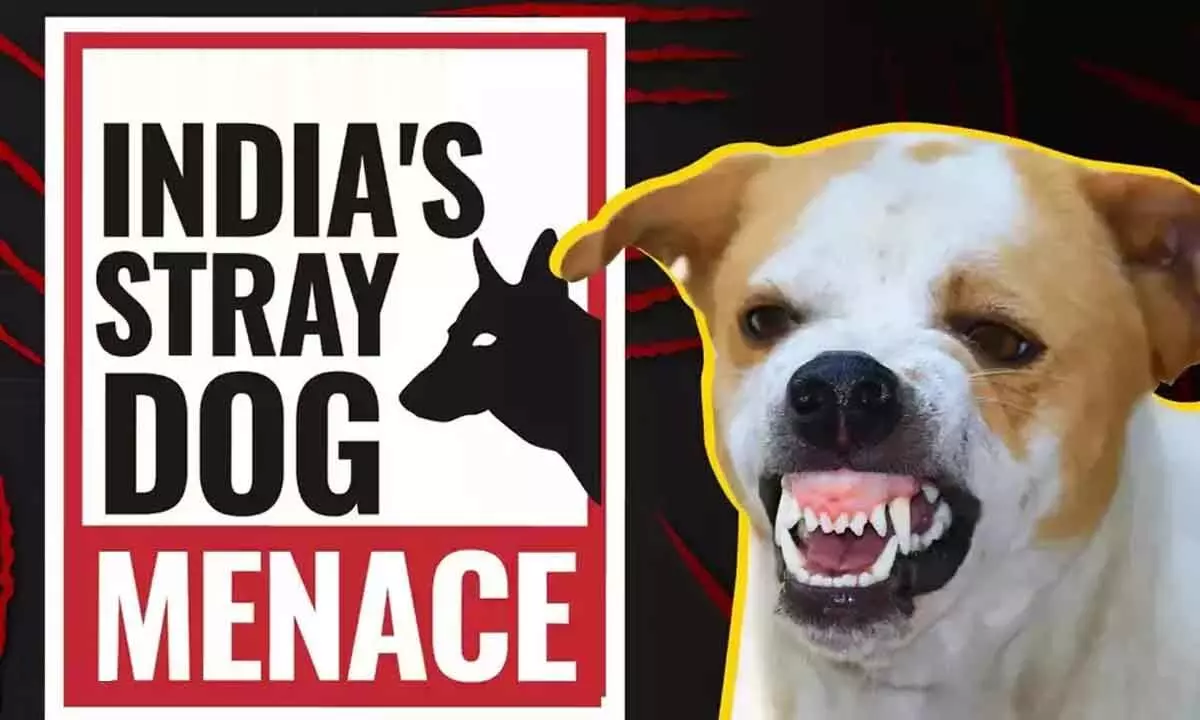Live
- Chase the sun, not the damage: Smart skin care choices for summer
- New textbooks for UP madrasas to be introduced soon
- 134 contestants in fray for ‘2024 polls’ from Visakhapatnam
- Empowering young women in STEM & entrepreneurship
- TDP Suffers Setback as Senior Leader Joins YSR Congress Party in Batrepalli Panchayat
- ‘Women drivers key to green mobility, but policies and training fall short’
- Aamir Khan reflects on ‘Laal Singh Chaddha’ failure; says his acting is the main reason for film’s failure
- High anticipation surrounds the release of ‘Pushpa 2: The Rule’ first single
- Celebrating Gujarat Day 2024: Wishes, Quotes, and Messages
- ‘Salaar 2’ to roll cameras from May end; release plans unveiled
Just In
Govt laxity turns stray dog menace grave


The death of a prominent businessman from Ahmedabad, Parag Desai, due to brain haemorrhage from a fall while being chased by a pack of stray dogs,...
The death of a prominent businessman from Ahmedabad, Parag Desai, due to brain haemorrhage from a fall while being chased by a pack of stray dogs, spotlighted the stray animal attacks. Public anguish and outrage will die down in no time, of course. Ironically, police registered an accidental death case; so, civic bodies shrug off.
But for the profile of this victim, which attracted national media, incidents of people, particularly children, suffering ferocious dog bites are not stray (random) anywhere in India. Despite their menacing regularity, except in case of deaths, public is largely unmoved. It seems dog bites man is not news, but the opposite is. Irony aside, the situation should be of grave concern to general public, politicians and governments. Alas! Bloody wounds or even deaths caused by strays have ceased to trigger a sustained public outrage against governments. Why dogs bite? In a survival of the fittest, hunger, battle for food, diseases, and harsh climate make them prone to growl and attack at slightest irritation.
Many governments in the West, such as Netherlands have shown how to eradicate street dogs, by imposing higher taxes on store-bought pets, mandating neutering, and providing for animal shelters, apart from vaccinating and sterilising the strays and incentivising their adoption. In India, facing funds crunch, for civic bodies any activity of sterilisation, vaccination or sheltering is too much to ask for. Hence, they tend to act only as long as public outrage lasts. The result is a piecemeal approach to a staggering problem; they do not even bother about leaving dogs in the same area after sterlisation and vaccination. Removing garbage where feeding opportunities abound is also critical.
Globally, dog-mediated rabies are said to cause an estimated 59,000 human deaths annually. World Health Organisation (WHO) estimates India accounts for 36% of global deaths. Despite a national action plan for dog-mediated rabies elimination by 2030, a visible action on the ground is lacking. Though a leader in rabies biologicals, the country continues to dither on preventing rabies which is a vaccine-preventable, zoonotic and viral disease – and is nearly always fatal.
The Animal Birth Control (Dogs) Rules, 2023, are never fully implemented, save for awareness campaigns, with the result that dog numbers keep competing with Indian population. Without long-term solutions, governments tend to resort to easy means such as mass culling. Unable to deal with attacks by aggressive vagrant canines and in the face of mounting criticism from people, the Kerala government has even said it will challenge an SC order against culling. Compounding the plight of the victims is usual shortage of anti-rabies vaccines at government hospitals. The situation is worse in rural areas where PHCs are ill-equipped.
Goa’s success in rabies elimination offers a ray of hope for other states, that consistent funding and support from governments and roping in NGOs would keep our streets free of canines. But, political will is the key, which won’t be possible without a consistent public glare. Till then, we will continue to see and hear of stray dogs chasing down hapless victims, biting and even mauling them to death. Vexed people are taking it out on the hapless animals, cruelly targeting them, while some even torture them for pleasure. Thus, stray, knee-jerk reactions from governments have become the order of the day. They act only so long as public reacts.

© 2024 Hyderabad Media House Limited/The Hans India. All rights reserved. Powered by hocalwire.com






